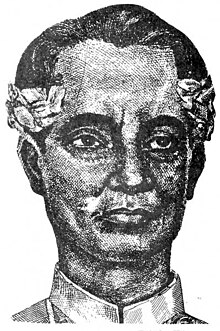
Poetry, also called verse, is a form of literature that uses aesthetic and often rhythmic qualities of language − such as phonaesthetics, sound symbolism, and metre − to evoke meanings in addition to, or in place of, a prosaic ostensible meaning. A poem is a literary composition, written by a poet, using this principle.

Modern lyric poetry is a formal type of poetry which expresses personal emotions or feelings, typically spoken in the first person.
Prose poetry is poetry written in prose form instead of verse form, while preserving poetic qualities such as heightened imagery, parataxis, and emotional effects.

Chinese poetry is poetry written, spoken, or chanted in the Chinese language, and a part of the Chinese literature. While this last term comprises Classical Chinese, Standard Chinese, Mandarin Chinese, Yue Chinese, and other historical and vernacular forms of the language, its poetry generally falls into one of two primary types, Classical Chinese poetry and Modern Chinese poetry.
Philippine literature is literature associated with the Philippines from prehistory, through its colonial legacies, and on to the present.

Francisco Balagtas y de la Cruz, commonly known as Francisco Balagtas and also as Francisco Baltasar, was a Filipino poet and litterateur of the Tagalog language during the Spanish rule of the Philippines. He is widely considered one of the greatest Filipino literary laureates for his impact on Filipino literature. The famous epic Florante at Laura is regarded as his defining work.
The Tanaga is an indigenous Filipino poem, traditionally in the Tagalog language, consisting of four lines with seven syllables each. It can also have rhymes schemes like AABB and ABAB.

José García Villa was a Filipino poet, literary critic, short story writer, and painter. He was awarded the National Artist of the Philippines title for literature in 1973, as well as the Guggenheim Fellowship in creative writing by Conrad Aiken. He is known to have introduced the "reversed consonance rhyme scheme" in writing poetry, as well as the extensive use of punctuation marks—especially commas, which made him known as the Comma Poet. He used the pen name Doveglion, based on the characters he derived from his own works. These animals were also explored by another poet, E. E. Cummings, in "Doveglion, Adventures in Value", a poem dedicated to Villa.
Francisco "Franz" Arcellana was a Filipino writer, poet, essayist, critic, journalist and teacher.
New Formalism is a late 20th- and early 21st-century movement in American poetry that has promoted a return to metrical, rhymed verse and narrative poetry on the grounds that all three are necessary if American poetry is to compete with novels and regain its former popularity among the American people.
José Cecilio Corazón de Jesús y Pangilinan, also known by his pen name Huseng Batute, was a Filipino poet who used Tagalog poetry to express the Filipinos' desire for independence during the American occupation of the Philippines, a period that lasted from 1901 to 1946. He is best known for being the "Hari ng Balagtasan", and for being the lyricist of the Filipino patriotic song "Bayan Ko".

This glossary of literary terms is a list of definitions of terms and concepts used in the discussion, classification, analysis, and criticism of all types of literature, such as poetry, novels, and picture books, as well as of grammar, syntax, and language techniques. For a more complete glossary of terms relating to poetry in particular, see Glossary of poetry terms.
Gémino Henson Abad is an educator, writer, and literary critic from Cebu, Philippines. He is a National Artist for Literature of the Philippines.
Teo Antonio is a Filipino poet. He was born in Sampaloc, Manila. He was educated at the University of Santo Tomas where he studied Fine Arts. Antonio is the son of Emilio Mar Antonio, hari ng balagtasan during the 1950s.
Florentino Collantes was a Filipino poet who was among the writers who spearheaded a revival of interest in Tagalog literature in the Philippines in the 20th century.

Ophelia Alcantara Dimalanta was a Filipino poet, editor, author, and academician. One of the country's most respected writers, Dimalanta published several books of poetry, criticism, drama, and prose and edited various literary anthologies. In 1999, she received Southeast Asia's highest literary honor, the S.E.A. Write Award.
Alejandro G. Abadilla, commonly known as AGA, was a Filipino poet, essayist, and fiction writer. Critic Pedro Ricarte referred to Abadilla as the father of modern Philippine poetry, and was known for challenging established forms and literature's "excessive romanticism and emphasis on rhyme and meter". Abadilla helped found the Kapisanang Panitikan in 1935 and edited a magazine called Panitikan. His Ako ang Daigdig collection of poems is one of his better-known works.
Nick Carbó is a Filipino-American writer from Legazpi, Albay, Philippines. Carbó writes poetry, essays, and edits magazines and anthologies. He is primarily known for his book of poetry titled Secret Asian Man (2000) Tia Chucha Press which won the Asian American Writers Workshop's Readers Choice Award. He also won the 2005 Calatagan Award from the Philippine American Writers & Artists for his book Andalusian Dawn (2004) Cherry Grove Collections. His most noted award is the 1999 Gregory Millard/New York City Department of Cultural Affairs New York Foundation for the Arts Fellowship.
Poetic devices are a form of literary device used in poetry. Poems are created out of poetic devices via a composite of: structural, grammatical, rhythmic, metrical, verbal, and visual elements. They are essential tools that a poet uses to create rhythm, enhance a poem's meaning, or intensify a mood or feeling.
Luis H. Francia is a Filipino American poet, playwright, journalist, and nonfiction writer. His memoir, Eye of the Fish: A Personal Archipelago, won both the 2002 PEN Open Book and the 2002 Asian American Literary Awards.





